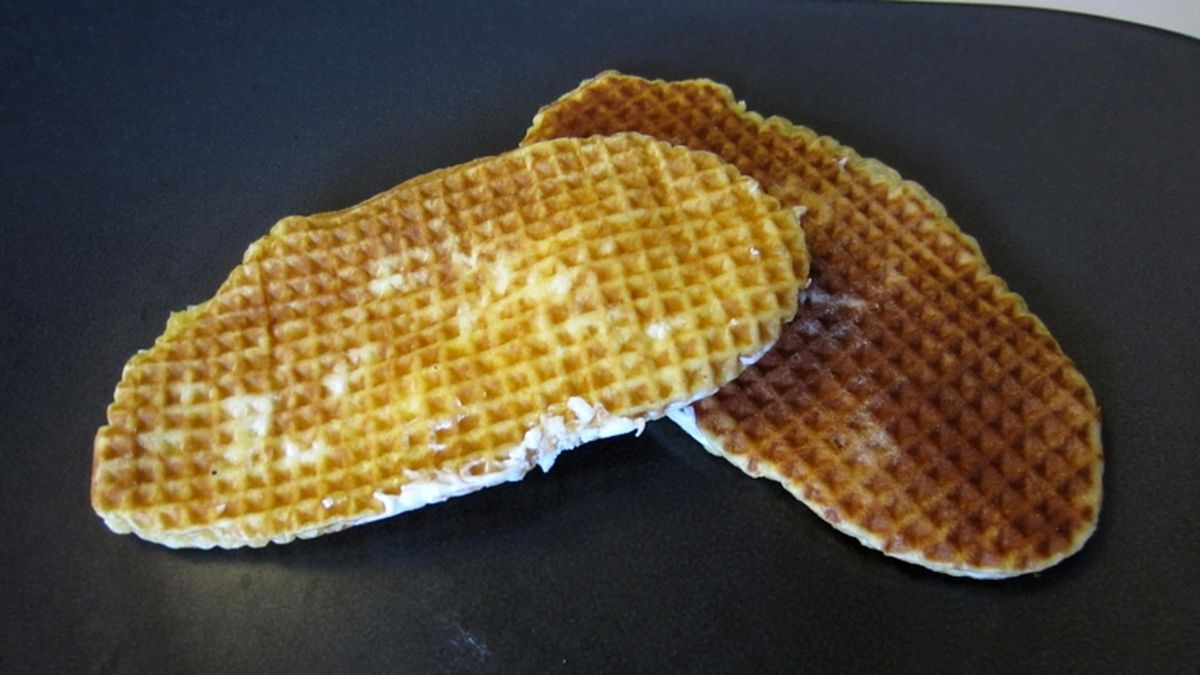 Waffles stuffed with vanilla | ©Anecdotrip.com / CC-BY-NC-SA
Waffles stuffed with vanilla | ©Anecdotrip.com / CC-BY-NC-SAWhat’s this?
A delicious speciality from Northern France, created in the 19th century, flavoured with brown sugar (vergeoise) or Madagascar vanilla.
Unlike the Belgian waffle, Lille waffle is flat!
A Flemish baker who lived in Lille created the recipe in the 19th century: a light vanilla cream filling, inside the waffle.
It’s made with sugar, butter, flour and eggs, with vanilla cream filling, but we also can find it with almond, chocolate-orange, blackcurrant-violet, raspberry-pepper, pistachio-cherry...
The little history
From wafla to oublie
Waffle word (gaufre in French) comes from an old Northern name, wafla, which refers to honeycombs.
Waffles are mentioned since the 13th century with the name oublie, in a poem by Guillaume de la Villeneuve, Les Crieries de Paris.
Oublies! Greeks named them obelias: it was a kind of bread cooked between two hot irons. The waffle was thick, but the oublie was very thin!
The oublie primitively was the bread made for religious rites, like the host. It had to be white, round, made with wheat flour and cooked with hot irons.
In the Middle-Ages, people ate plenty of oublies: even monks from abbey of Cluny ate them for supper and during Lent.
On Pentecost, people even threw oublies in churches, from the vaults, with a doves' release!
Medieval lords also received every year a bag full of oublies: it was the obliage, the "oublie's law".
The oublayeurs and their business
People who made oublies had a name: oublayeurs. King gave them status at the end of the 13th century.
But these bakers also made nieules, another kind of thin oublie: the name nieule comes from Latin nebula, which means cloud...
In 1566, oublie-makers were included into bakers' brotherhood. At that time, they made hot waffles for special occasion.
King Charles IX and Charles VI the Mad even wrote edicts to organize sale and fabrication on public places: in the middle of the 15th century, we had more than 29 oublie-makers in Paris!
Ginger and nut oil
Book Le Ménagier de Paris (1393) inventories 4 waffles recipes:
- one made with flour, eggs and wine;
- the same recipe with cheese;
- the "gaufre coulisse" with a watery mixture;
- another recipe made with flour, ginger powder and eggs.
Jean La Bruyère-Champier wrote in the 16th century that peasants loved waffles; they made them with flour and salt: the watery dough was put in a waffle iron coat with nut oil, then cooked.
La Bruyère-Champier added rich people ate them thick, with eggs, sugar or honey, flour and white wine.
King François I was fond of them: he had his own silver waffle iron, decorated with a salamander!
